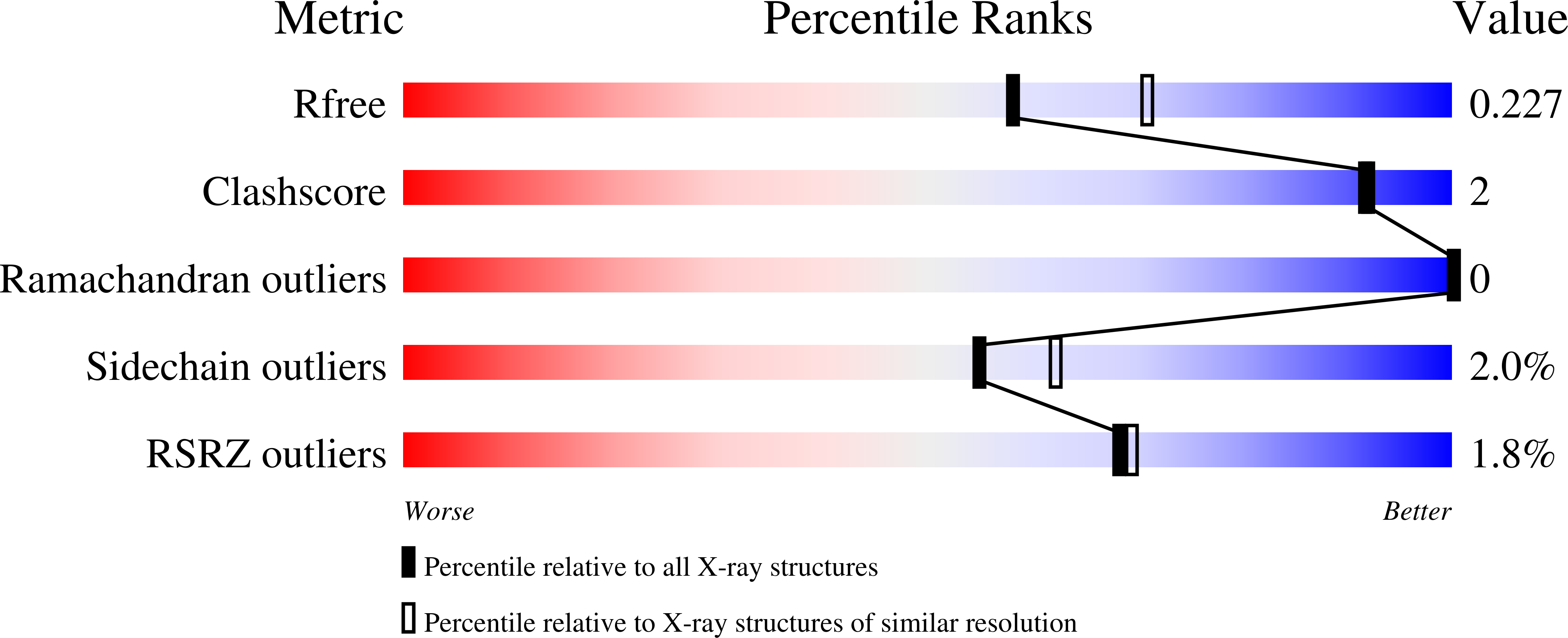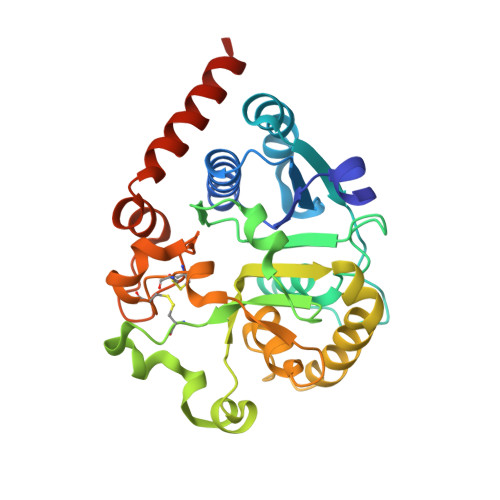Crystal polymorphism in fragment-based lead discovery of ligands of the catalytic domain of UGGT, the glycoprotein folding quality control checkpoint.
Caputo, A.T., Ibba, R., Le Cornu, J.D., Darlot, B., Hensen, M., Lipp, C.B., Marciano, G., Vasiljevic, S., Zitzmann, N., Roversi, P.(2022) Front Mol Biosci 9: 960248-960248
- PubMed: 36589243
- DOI: https://doi.org/10.3389/fmolb.2022.960248
- Primary Citation of Related Structures:
7ZXW - PubMed Abstract:
None of the current data processing pipelines for X-ray crystallography fragment-based lead discovery (FBLD) consults all the information available when deciding on the lattice and symmetry (i.e., the polymorph) of each soaked crystal. Often, X-ray crystallography FBLD pipelines either choose the polymorph based on cell volume and point-group symmetry of the X-ray diffraction data or leave polymorph attribution to manual intervention on the part of the user. Thus, when the FBLD crystals belong to more than one crystal polymorph, the discovery pipeline can be plagued by space group ambiguity, especially if the polymorphs at hand are variations of the same lattice and, therefore, difficult to tell apart from their morphology and/or their apparent crystal lattices and point groups. In the course of a fragment-based lead discovery effort aimed at finding ligands of the catalytic domain of UDP-glucose glycoprotein glucosyltransferase (UGGT), we encountered a mixture of trigonal crystals and pseudotrigonal triclinic crystals-with the two lattices closely related. In order to resolve that polymorphism ambiguity, we have written and described here a series of Unix shell scripts called CoALLA ( c rystal p o lymorph a nd l igand l ikelihood-based a ssignment). The CoALLA scripts are written in Unix shell and use autoPROC for data processing, CCP4-Dimple / REFMAC5 and BUSTER for refinement, and RHOFIT for ligand docking. The choice of the polymorph is effected by carrying out (in each of the known polymorphs) the tasks of diffraction data indexing, integration, scaling, and structural refinement. The most likely polymorph is then chosen as the one with the best structure refinement R free statistic. The CoALLA scripts further implement a likelihood-based ligand assignment strategy, starting with macromolecular refinement and automated water addition, followed by removal of the water molecules that appear to be fitting ligand density, and a final round of refinement after random perturbation of the refined macromolecular model, in order to obtain unbiased difference density maps for automated ligand placement. We illustrate the use of CoALLA to discriminate between H3 and P1 crystals used for an FBLD effort to find fragments binding to the catalytic domain of Chaetomium thermophilum UGGT.
Organizational Affiliation:
Biochemistry Department, Oxford Glycobiology Institute, University of Oxford, Oxford, United Kingdom.



















